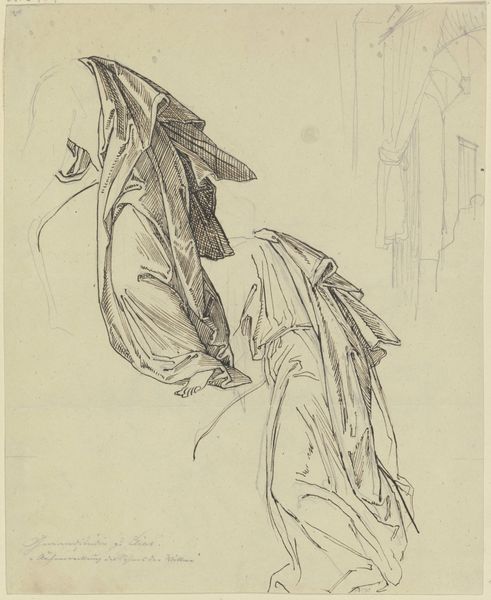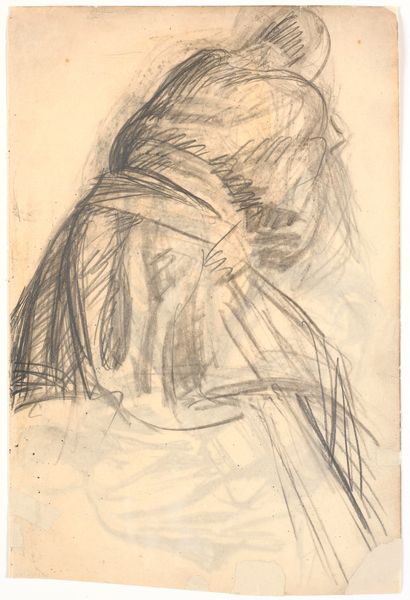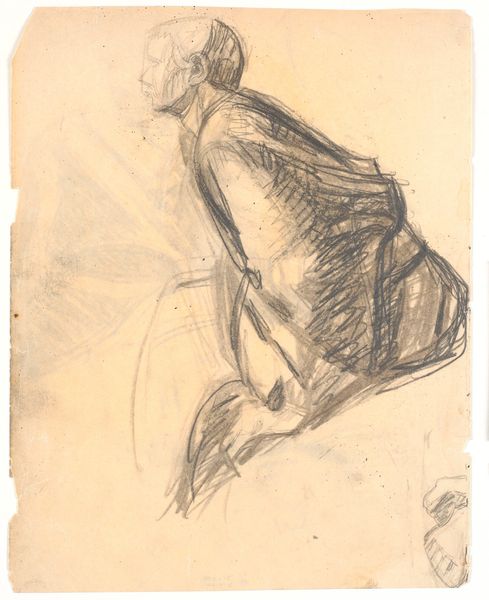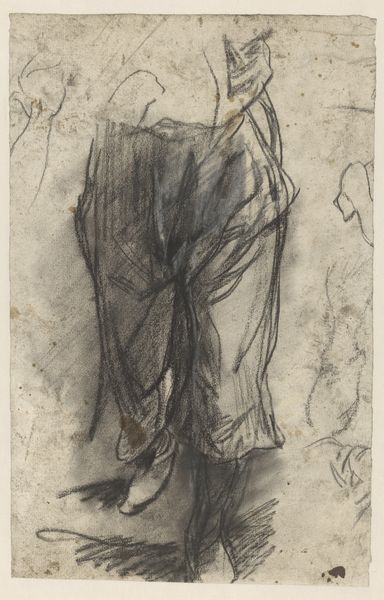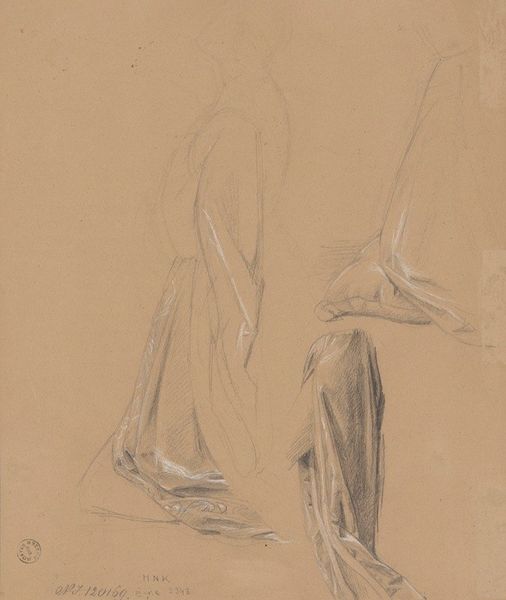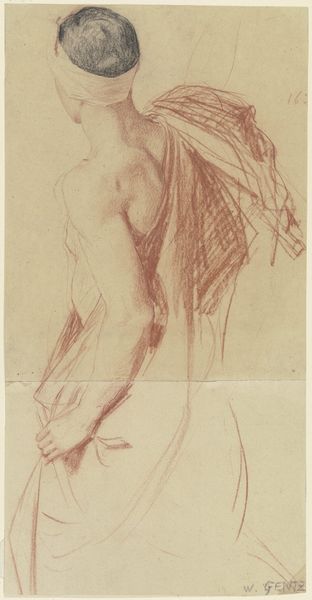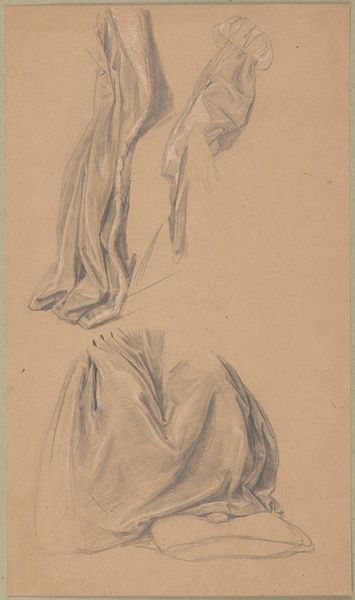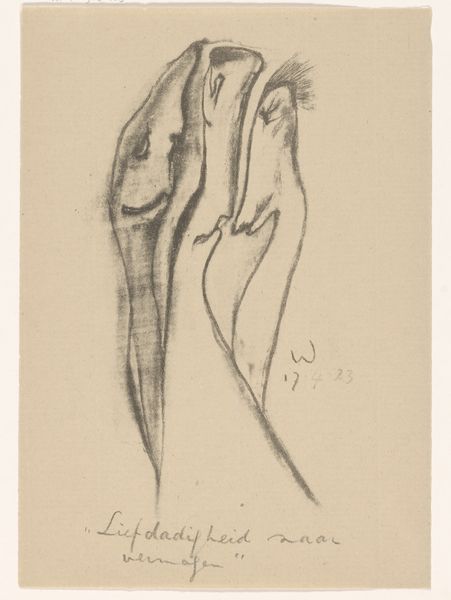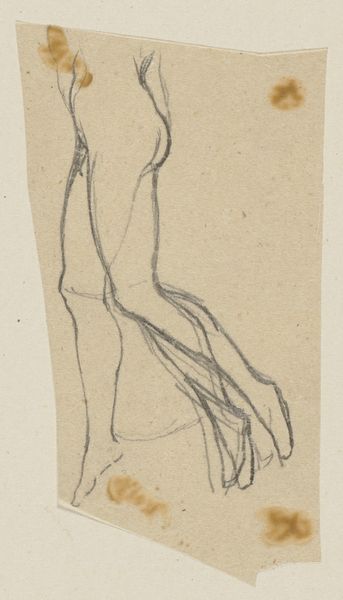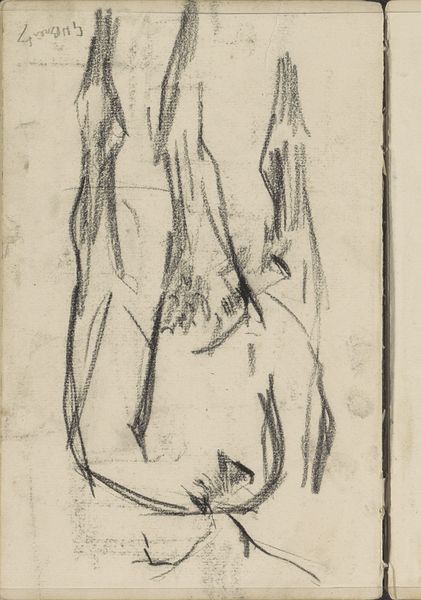
drawing, chalk, pastel
#
portrait
#
drawing
#
figuration
#
chalk
#
portrait drawing
#
pastel
#
academic-art
Copyright: Public Domain
Victor Müller's study at the Städel Museum presents us with a sheet of studies in charcoal of drapery, likely for a female figure. The fabric is rendered with a deep understanding of light and shadow, each fold meticulously observed. But it is the very act of draping that has captured my attention; the way fabric can conceal and reveal, hinting at the form beneath. The study brings to mind the veiling of sacred statues in antiquity or, closer to our time, the emotional intensity of figures draped in mourning. Think of the grieving figures on classical sarcophagi, their faces hidden in shadow and heavy folds, and you'll grasp the depth of emotion suggested by the heavy swathe. The psychological implications of such drapery resonate through time; it is a means to express a wealth of emotions, from grief to reverence. The way we use clothing and fabric as a means of both presentation and concealment is, and has always been, deeply rooted in our collective psyche. These studies from Müller are a reminder of the symbolic weight that fabric carries.
Comments
No comments
Be the first to comment and join the conversation on the ultimate creative platform.

